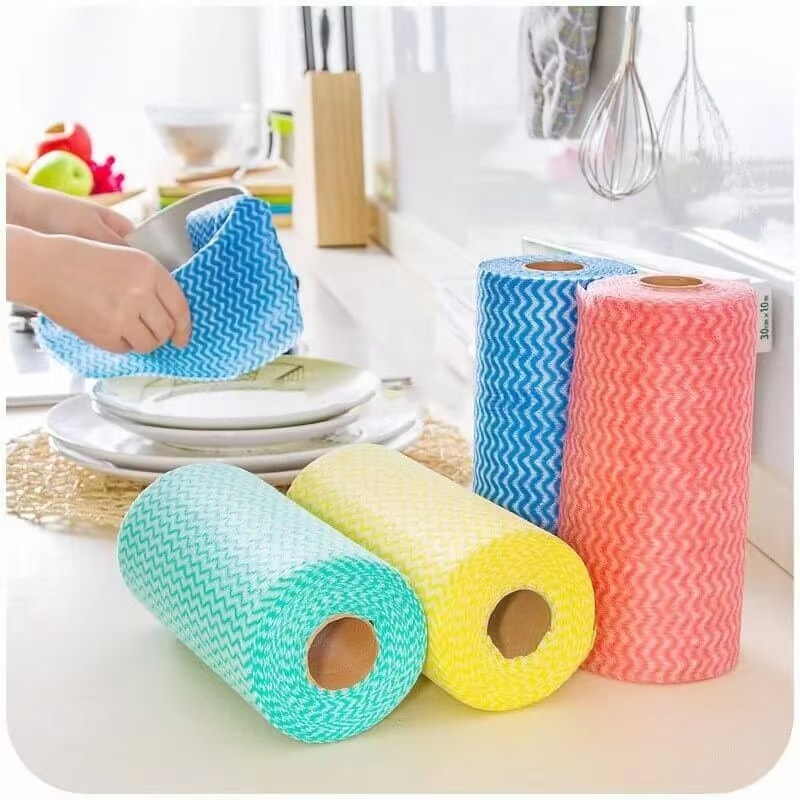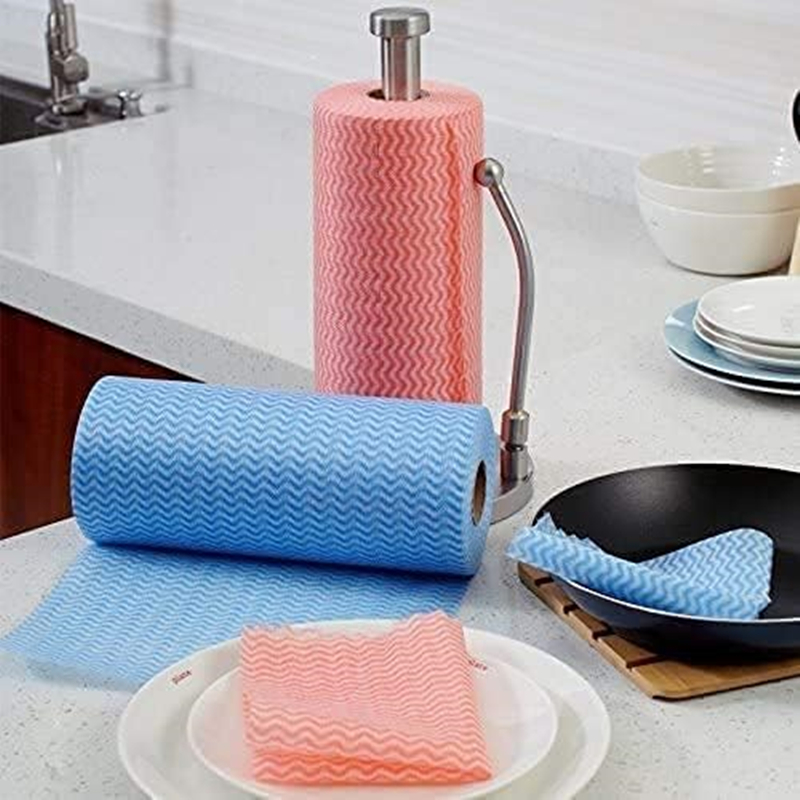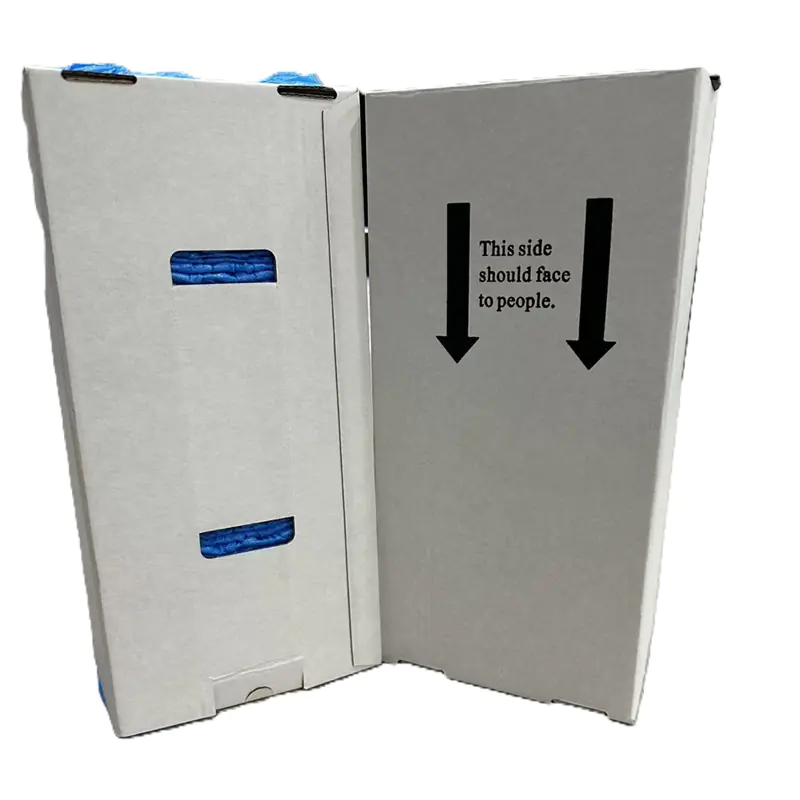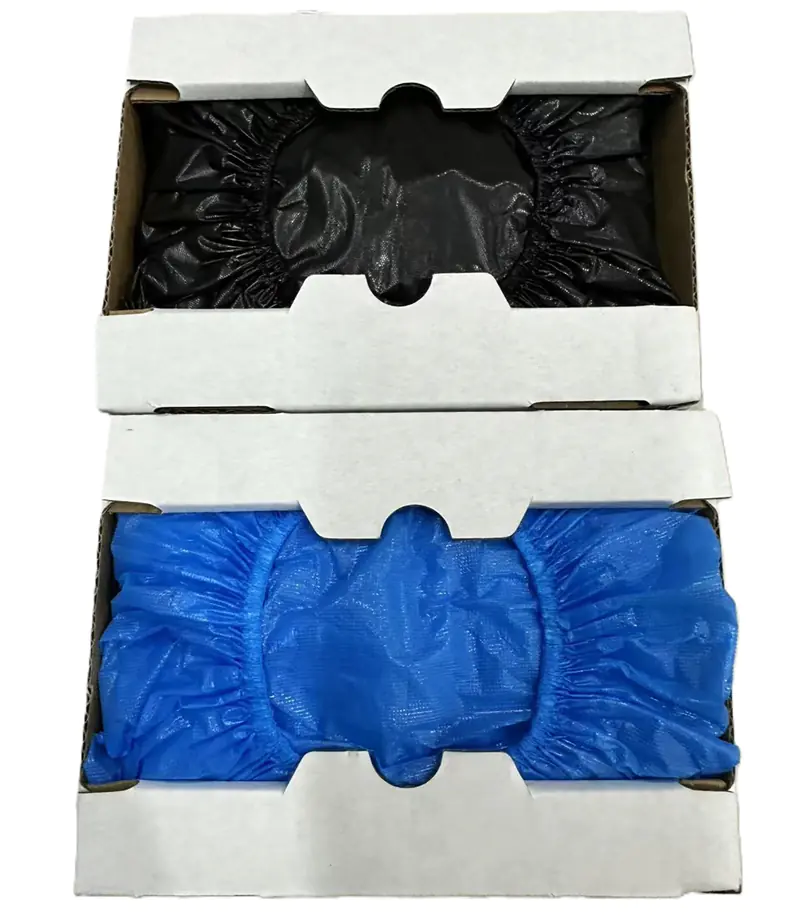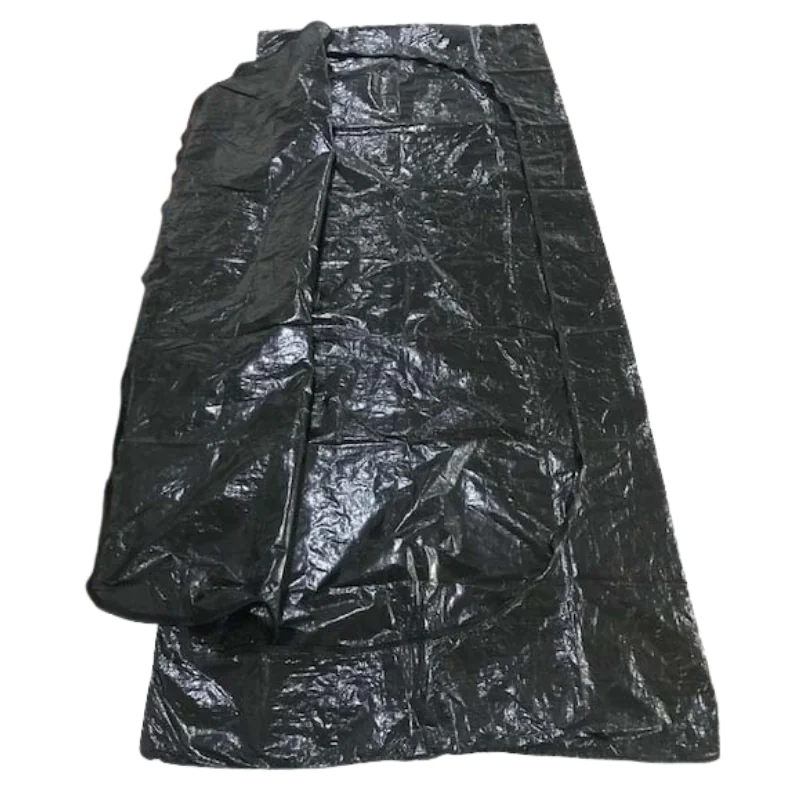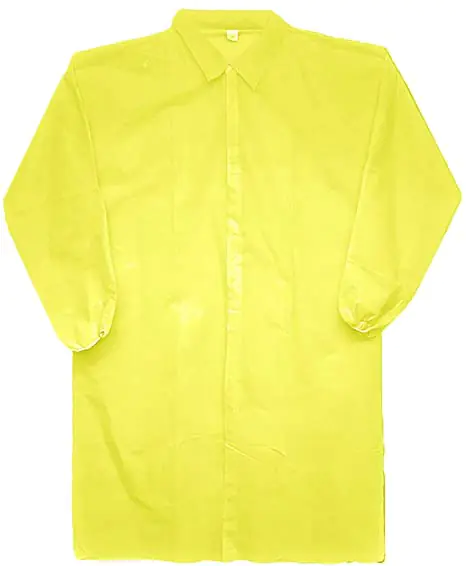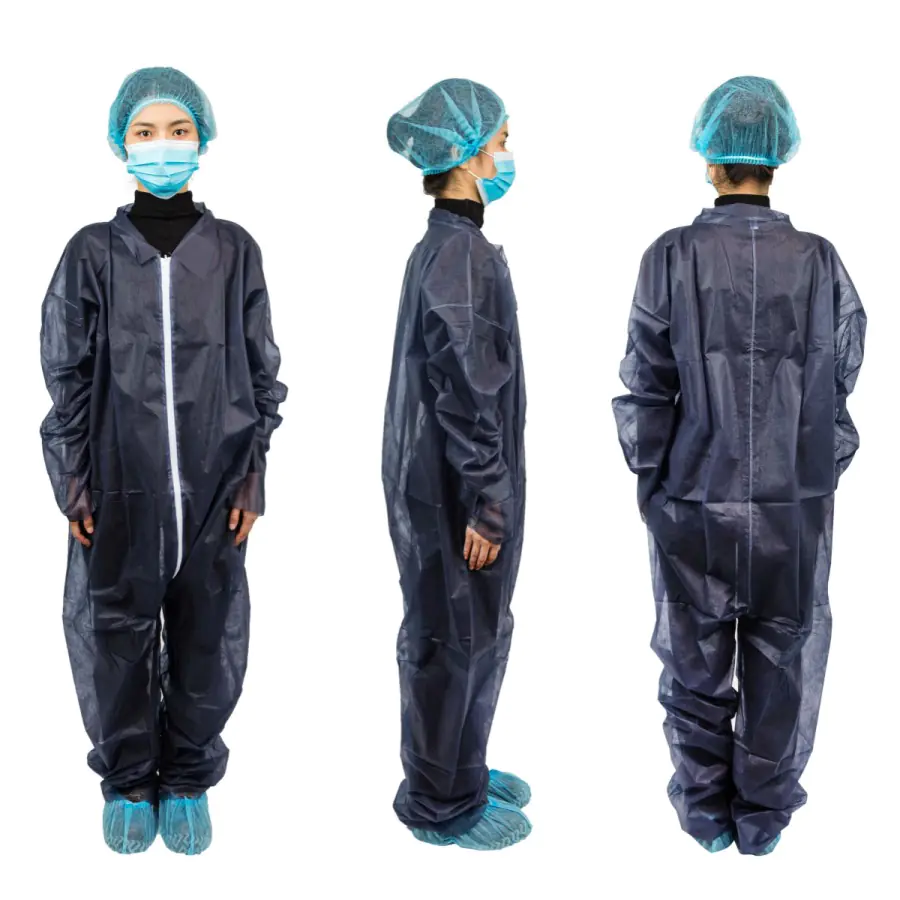Keeping our homes clean is important. Especially the kitchen! It’s where we cook and eat. But have you ever thought about your dish rag? The simple cloth you use to wipe counters and wash dishes might be hiding a secret. It could be full of germs! This is why some people are switching to disposable dish rags. Are they really the ultimate cleaning solution? Let’s find out.

Germs Be Gone: The Power of Hygiene & Safety
Think about your regular dish rag. You use it, rinse it, and hang it up. But is it really clean? Studies show that reusable cloths can be breeding grounds for bacteria. In fact, after just 24 hours, a damp cloth can still hold 90% of bacteria like E. coli . Yuck!
When you use that same cloth again, you risk spreading those germs around. This is called التلوث التبادلي. It means moving germs from one surface to another, like from a dirty counter to a clean plate.
This is where disposable dish rags shine.
- You use them once.
- Then, you throw them away.
- No time for nasty bacteria to grow!
Using a fresh, single-use rag each time means you are not spreading old germs. This makes your kitchen much safer and gives you peace of mind. It’s a big step towards better hygiene. Many cleaning cloths, like handy reusable disposable rags with high absorbency, are designed for this kind of clean use.
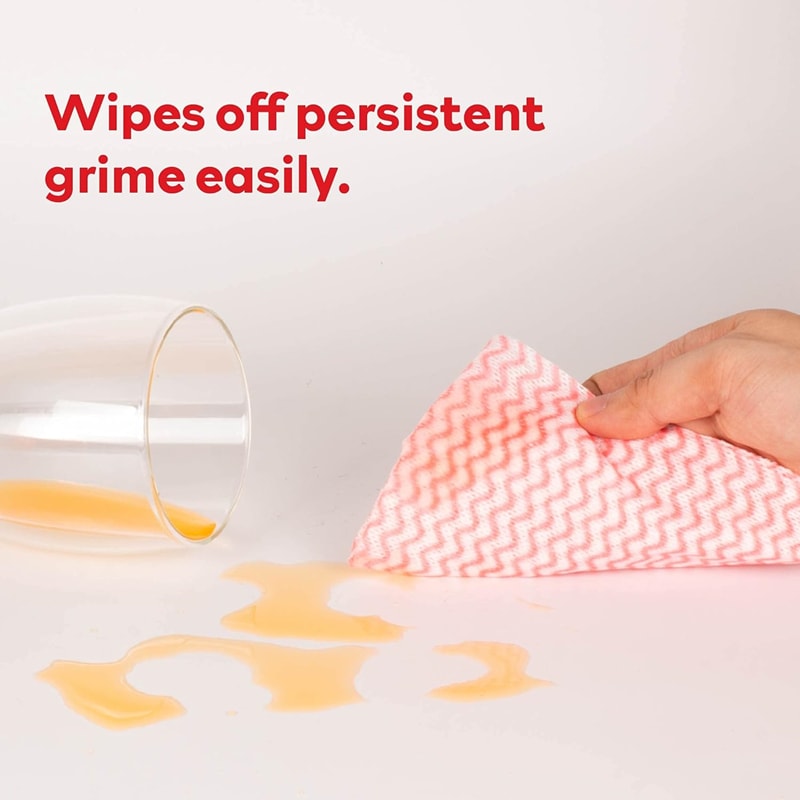
Counting the Pennies: تحليل التكلفة
Okay, so disposables are cleaner. But what about the cost? Let’s look at the numbers.
استخدام reusable rags seems cheap at first. You buy them once and reuse them. But you have to wash them. Washing needs detergent, water, and electricity for your washing machine. This adds up. One estimate suggests washing reusable rags costs about $30 per year in supplies, plus around $1.34 for each laundry load. You also spend time doing laundry.
Now, let’s look at disposable dish rags. You have to keep buying them. If you use them a lot, buying them in bulk might cost around $50 per year. This seems like more money upfront.
However, think about the hidden savings:
- You save الوقت because you don’t do laundry for rags.
- You save المياه and electricity.
- You gain convenience. Grab a fresh one, use it, toss it. Easy!
Here’s a simple table comparing them:
| الميزة | Reusable Rags | Disposable Rags |
| Upfront Cost | Low | Higher (need to rebuy) |
| Ongoing Cost | Detergent, Water, Energy (~$30+/yr + laundry cost) | Purchase Cost (~$50/yr bulk) |
| Time Cost | Washing & Drying | Minimal |
| النظافة الصحية | Risk of germ buildup | High (single-use) |
| الملاءمة | Lower | Higher |
So, while disposables might cost a bit more money directly, they offer great convenience و hygiene benefits. The choice depends on what you value more: slightly lower direct cost or time savings and better السلامة.
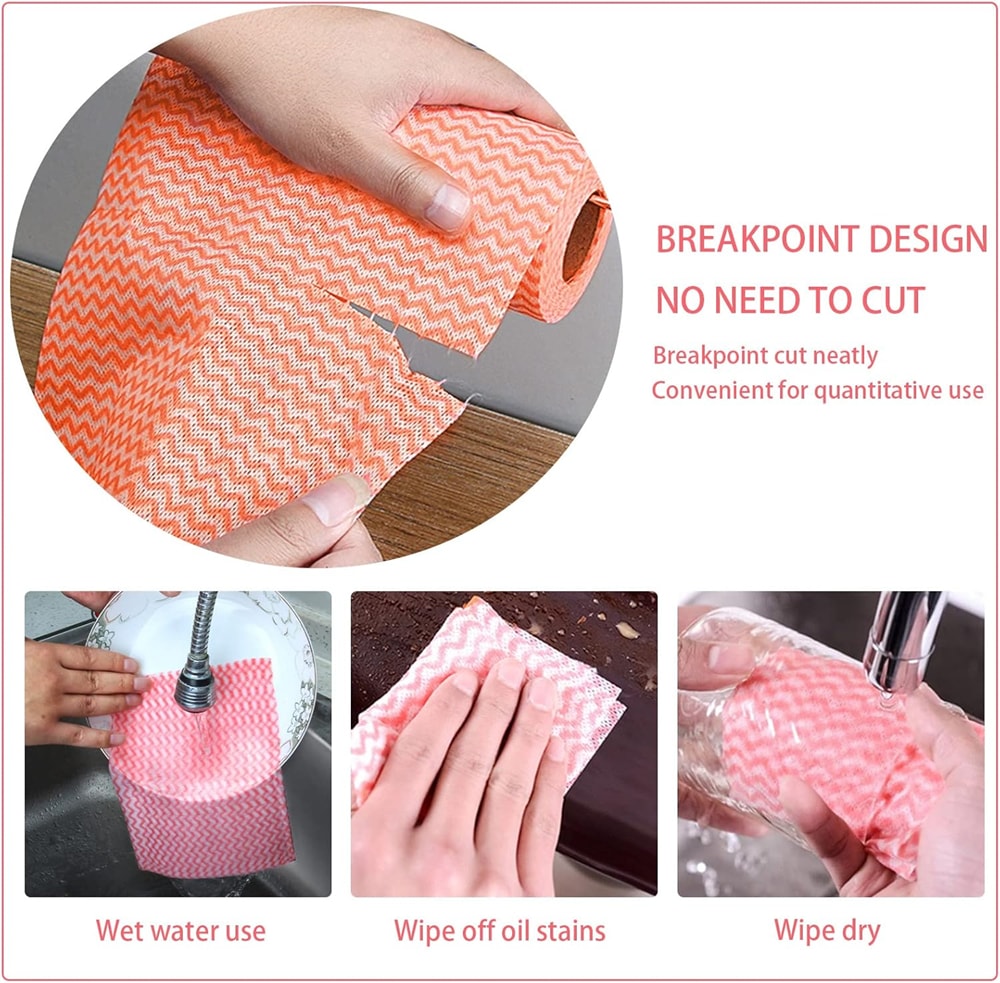
Caring for Our Planet: الأثر البيئي
We all want to protect the Earth. So, the idea of throwing things away makes us pause. What is the environmental impact من disposable dish rags?
It’s true that many cleaning products create waste. A lot of nonwoven wipes (the material often used for disposables) are made from plastics. Sadly, about 70% of these wipes end up in landfills around the world. That’s a lot of trash!
But there’s good news too! Companies know we care about the planet. They are making eco-friendly options.
- Some disposable rags use compostable polymers. These materials can break down naturally. About 15% of nonwoven wipes are already using these better materials.
- Look for BPI-certified products. This means they are proven to be compostable. Using these can reduce landfill waste by a huge amount, maybe even 80%, compared to regular disposables.
- Other options use plant-based fibers. These come from plants, not oil.
- Some brands, like Seventh Generation, focus on these greener choices.
Choosing eco-alternatives helps a lot. For example, some rags are made from recycled PET (rPET). This means they use recycled plastic bottles! Using rPET can cut down the need for new plastic waste by about 30% compared to making rags from all-new materials [^6]. These eco-friendly choices make using disposables feel better. You still get the clean, but with less harm to the earth. You can often find these helpful wipes packaged as disposable dish cloths conveniently on a roll.

What People Want: Market Trends
Why are disposable dish rags becoming popular? The market trends show a clear picture. The market for nonwoven wipes grew steadily, with a 6.2% increase each year between 2020 and 2024.
What’s driving this growth?
- Hygiene Demand: People are more aware of germs than ever before. They want cleaning tools that help keep their homes safe. Disposable rags meet this need directly.
- Consumer Shift: Our lives are busy! People value convenience. The ease of using a fresh rag and tossing it fits modern lifestyles. This consumer shift towards easy solutions makes disposables attractive.
This trend shows that many people find the benefits of disposables outweigh the downsides, especially when eco-friendly options are available.

How Well Do They Work? Practical Performance
Okay, they are clean and convenient. But do they clean well? Let’s talk about practical performance.
One key job of a dish rag is soaking up spills. How do disposables compare?
- الامتصاصية: Some reusable options, like famous Swedish dishcloths, are super absorbent. They can hold up to 15 times their weight in liquid. That’s impressive!
- Disposable Rags: معظم disposable dish rags are also quite absorbent, often holding about 10 times their weight. While maybe not as absorbent as the very best reusables, they still do a good job for most kitchen tasks.
It seems الخرق التي تستخدم لمرة واحدة prioritize hygiene و single-use convenience over maximum possible absorbency. They are designed to be good enough for the job and then be thrown away, taking the germs with them. For many everyday spills and wipes, their absorbency is perfectly fine. For specific tasks where you need maximum soaking power, you might still reach for a different tool, but for general cleaning, disposables work well. Many are available as general-purpose non-woven disposable cleaning wipes on rolls.
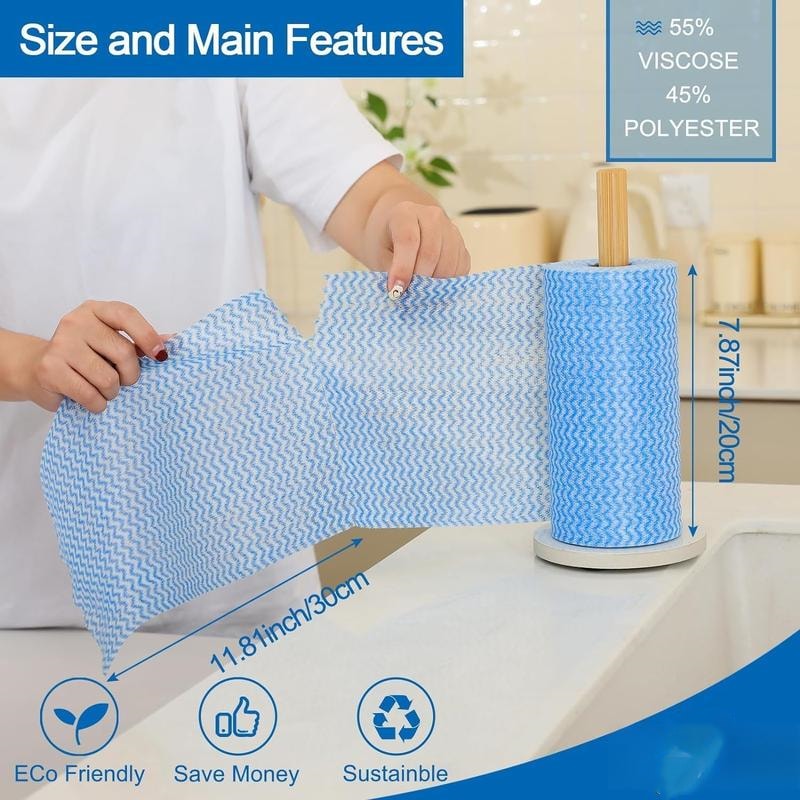
Choosing Green: More on Eco-Alternatives
Let’s look closer at the eco-alternatives. If you like the idea of disposables but worry about waste, these are for you.
- Material Matters: Standard disposables are often made from nonwoven materials like polypropylene (a type of plastic). The eco-friendly versions use different stuff.
- Plant-Based Fibers: Materials like bamboo, wood pulp, or cotton are used. These are renewable resources.
- Compostable Polymers: Special plastics designed to break down in a compost pile. Look for certifications like BPI.
- Recycled PET (rPET): Giving old plastic bottles a new life as cleaning rags! This reduces plastic waste and uses less energy than making new plastic.
Brands like Seventh Generation have built their name on eco-friendly products. Choosing these types of disposable dish rags means you can enjoy the hygiene benefits without feeling guilty about landfill waste. Remember to check the packaging for disposal instructions – compostable rags need to go in a compost bin, not the regular trash, to break down properly.
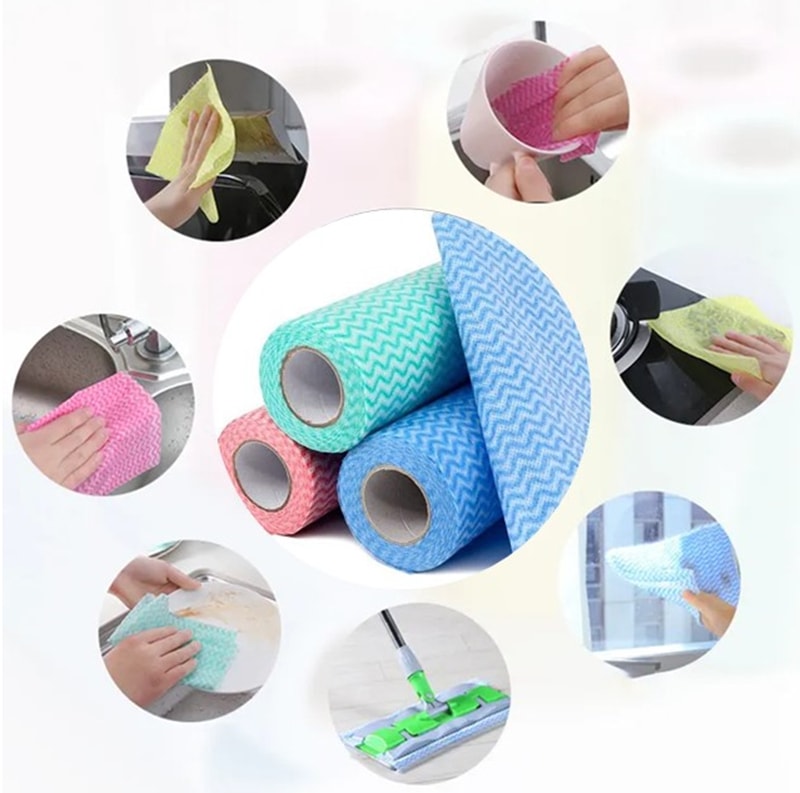
The Final Wipe-Down: Conclusion
So, are disposable dish rags فإن ultimate cleaning solution? They offer strong benefits:
- Top-Notch Hygiene: They greatly reduce the risk of bacteria و التلوث التبادلي.
- Amazing Convenience: Grab, use, toss. Saves time and effort.
But there are trade-offs:
- Cost: Can be slightly more expensive than washing reusable cloths over time.
- Environment: Regular disposables add to landfill waste. However, eco-friendly, compostableو rPET options help solve this.
ال market trends show that hygiene demand و consumer shift towards convenience are making them popular. While they might not have the extreme absorbency of something like a Swedish dishcloth, their practical performance is good for most tasks.
The best choice depends on you. If hygiene و convenience are your top priorities, disposables are a great fit. If you choose them, try to find eco-alternatives made from plant-based fibers أو recycled PET (rPET) to lessen the environmental impact.
Disposable dish rags might not be perfect for everyone, but for many, they offer a clean, easy, and safe way to tackle kitchen messes.
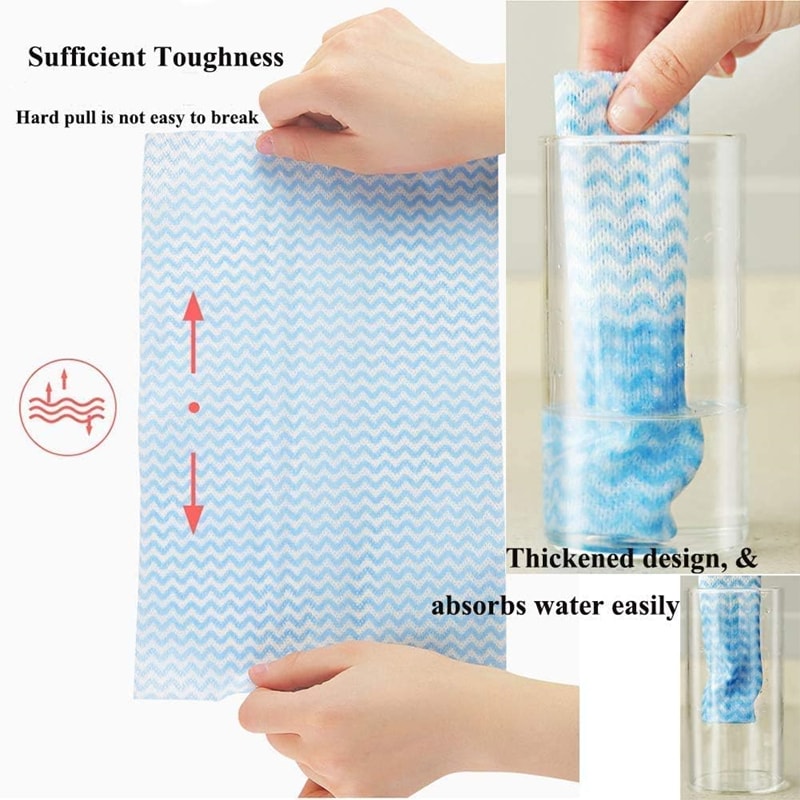
Disposable Dish Rags: Key Data & Statistics
| Category | Key Finding | Source | Relevance to Disposable Rags |
| Hygiene & Safety | Reusable cloths retain 90% of bacteria like E. coli after 24 hours. | NCBI Study [^1] | Disposable rags eliminate bacterial buildup, offering single-use hygiene. |
| تحليل التكلفة | Reusables: ~$30/yr + $1.34/load. Disposables: ~$50/year (bulk). | csmonitor.com [^2] | Disposables save time/water but cost more upfront. Trade-off: convenience vs. expense. |
| الأثر البيئي | 70% nonwoven wipes end in landfills globally. 15% use compostable polymers. | ScienceDirect [^3] | Eco-friendly disposables (BPI-certified) reduce landfill waste by ~80%. |
| Market Trends | Nonwoven wipes market grew 6.2% CAGR (2020-2024), driven by hygiene demand. | ScienceDirect [^4] | Demand reflects consumer shift toward single-use convenience. |
| Practical Performance | Swedish dishcloths absorb 15x weight vs. disposables ~10x. | ecologieliving.com [^5] | Disposables prioritize hygiene over extreme absorbency. |
| Eco-Alternatives | Recycled PET (rPET) rags reduce plastic waste by 30% vs. virgin materials. | allrags.com [^6] | Brands like Seventh Generation use rPET or plant-based fibers for greener disposables. |
